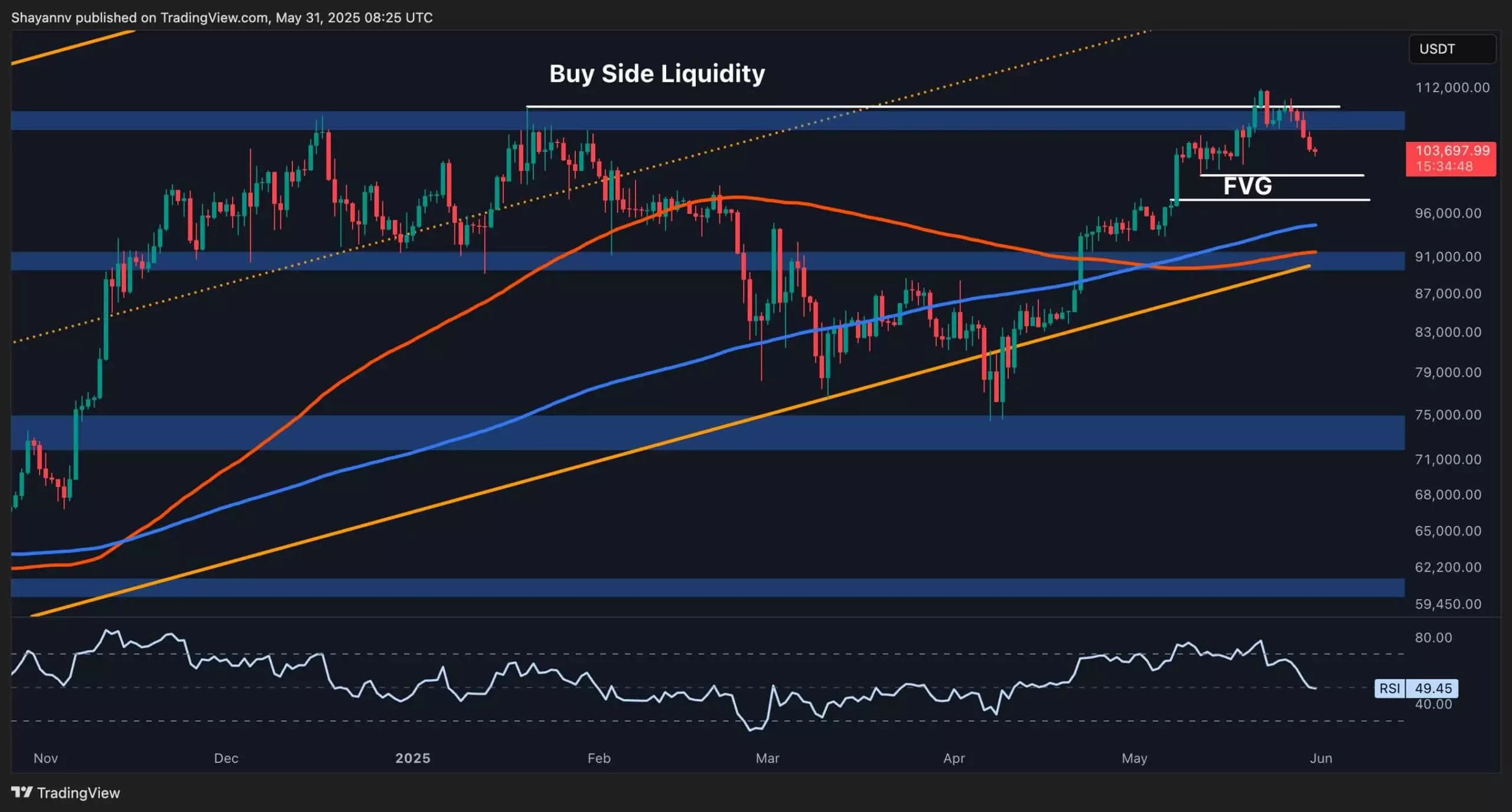Bitcoin, a digital currency that once seemed immune to traditional market ailments, is currently facing turbulent waters—culminating in a noteworthy rejection at the $111,000 mark. This price point, which looked promising during its brief breakout past the previous all-time high of $109,000, has turned into a formidable barrier. For cryptocurrency enthusiasts and investors, this isn’t merely numerical; it encapsulates the psychological warfare of a market punctuated by rampant speculation and the fickle nature of bullish sentiment.
The failure to maintain traction above this significant psychological level hints at deeper fractures within the market. Investors who have been accustomed to Bitcoin’s meteoric rises may find themselves at a crossroads as bearish pressures mount. It’s not just the rejection at $111K that raises eyebrows; it’s the stark realization that the bullish momentum, often seen as the lifeblood of cryptocurrency markets, appears to be waning.
Sweeping Waters of Sell Orders
What lies beneath these descending trends? A deeper dive reveals that the selling pressure observed wasn’t merely a result of panic selling; it was orchestrated, with smart-money players positioning themselves deftly. By sweeping through buy-side liquidity, the market allowed these entrenched investors to offload their assets efficiently, giving rise to a classic “sell the news” scenario.
Indeed, a significant sell-off often blindsides retail investors who fail to read the signs. Those stuck in the euphoria of a rally must now grapple with the possibility of a deeper correction. With Bitcoin’s price teetering around the fair value gap—an area between $97,000 and $100,000—the immediate future looks susceptible to volatility. This gap may be a beacon for demand, yet it also poses risks that could pave the way for further declines if support crumbles.
The Critical Support Zones Ahead
Investors now find themselves camping on the precipice, straddling a narrow band of support and resistance that stretches from $100,000 to $108,000. The recent breaches, showing a decisive move below the former ascending price channel, indicate that momentum is not just waning; it’s being actively countered by forces intent on re-establishing control over the market narrative. Herein lies the paradox of Bitcoin—a digital gold that is as much about faith as it is about finances.
The Realized Price metric programs the fundamental psychological undercurrents of market sentiment. Mid-term holders, those with an inclination toward stability, have watched their previous acquisition costs come into focus around the critical $98,000 mark. Holding steady above this price has historically been a situation where confidence prevails. Yet a slip below could send ripples of anxiety through the ranks of holders unsure of their financial footing.
Beyond the Short-Term Volatility
The tantalizing prospect of retaking past highs sits at the back of every investor’s mind, but caution is warranted. Bitcoin’s history is fraught with sharp corrections followed by aggressive rallies, leading many to question whether the strategy of ‘buying the dip’ remains viable or if it’s merely an illusion—solace for the weary investor. A break below the critical $98,000 support not only invites deeper corrections but may also trigger a seismic shift in market sentiment, drowning out any voices of optimism.
Short-term volatility is a given in this environment, but what’s essential is the broader market perception. If Bitcoin stumbles below the critical support zones, it might just reveal a new reality for a currency that has long basked in inflated egos derived from its previous bull runs.
Although the short-term stakes appear blurry, Bitcoin’s unique position as a market tempest isn’t completely devoid of hope. Should adequate absorption of selling pressure be observed in crucial support zones, we could see a resurgence of bullish sentiment. The question that remains is whether the market is resilient enough to withstand the looming pressures ahead—an inquiry that every investor must answer on their own.















Leave a Reply